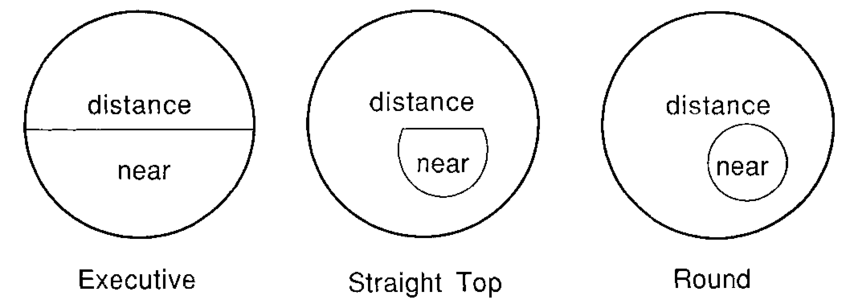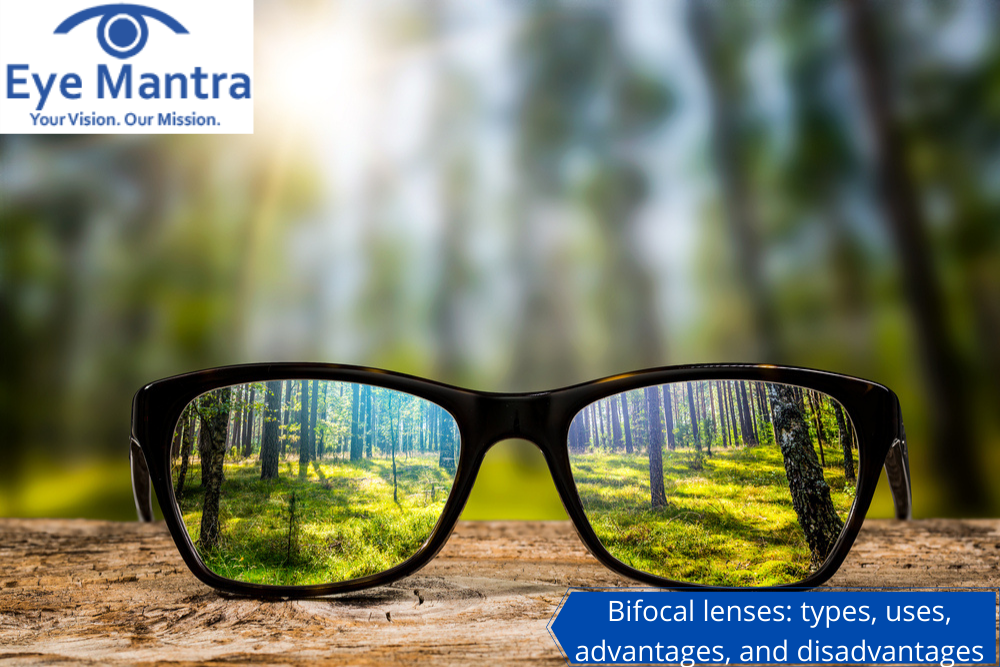Contents
What Are Bifocal Lenses?
There are different kinds of lenses available in the market today. Earlier there used to be a problem among the people who required two different kinds of eyeglasses for viewing, one for viewing the distant objects and the other for viewing the nearby placed objects. So, Benjamin Franklin created new kinds of lenses by stacking two different kinds of lenses together, these were called the bifocal lens. Bifocal lenses are lenses with lines separating two different prescriptions. There is a presence of a distance lens at the top and the lower part has a lens that can be used to view the objects placed nearby.

Use of Bifocal Lens
Bifocal lenses are used for patients who have presbyopia, a condition in which the person is not able to see the nearby placed objects. Presbyopia is an age-related condition in which the vision of the person affected becomes blurred. At the age around 40years or above the crystalline lens present in our eyes begins to lose its flexibility and becomes more rigid and finds it difficult to change the shape easily as in the younger age. This makes it hard to do basic tasks like reading and writing.
Due to this the bifocal lenses are used by them and are prescribed to people above the age of 40 years who have natural degradation of their vision due to their ageing process. There are different types of bifocal lenses present but they provide the same user which is the lower part of the lens is used to view the nearby objects or to do work related to reading and writing while the upper part of the lens is used to view the objects placed at a faraway distance or to do an activity like driving.
Need For A Bifocal Lens
A bifocal lens is required for various uses including eye condition presbyopia, accommodative dysfunction, and accommodative esotropia.
Presbyopia:
It is an age-related eye condition in which the ability to focus on nearby objects reduces and makes the vision blurrier. They also face difficulty in focusing from distance to near vision. As the age progresses the discomfort related to the eye condition increases. The problem in focusing is cured by prescription of the bifocal lens for daily wear.
Accommodative Dysfunction:
This type of dysfunction is normally seen in kids who have problems in quick focusing from the distance to near vision. The muscles in the eyes which are responsible for focusing are affected in this condition. Children suffering from it are prescribed bifocal lenses. The symptoms of the dysfunction are blurred vision, headache, ocular discomfort, fatigue, motion sickness, lack of concentration, and double vision.
Accommodative Esotropia:
It occurs due to problems caused by the eye muscles and the amount the eyes need to focus on. The accommodative system in such children is not properly developed. These children have huge focusing power and their eyes turn in when they focus on the nearby objects and become straight again when they look at a distance. They have a very large amount of uncorrected farsightedness and are prescribed with the bifocal lens.
Types of Bifocal Lenses
Flat Top
These are the commonly found bifocal lens. In these types of lenses, the lower part of the lens is present in the shape of a half-moon or the letter D on its side. The upper part and the lower part in the lens can be clearly distinguished from each other. The patient using such a bifocal lens has the choice of choosing the length of the lower segment which is either 25mm or 28mm.
Round Seg
The bifocal lens having a round-shaped near-sighted lens is known as the round seg. In this type of lens, the segment is either 22 or 24mm in length and it provides more area to adjust between the two different types of vision easily. These lenses are very rarely used nowadays.
Blended
This type of bifocal lens has the lower part of the lens in a round shape and the edges of the lens are blended with the upper lens making the lens appear as one.
Executive
In this type of bifocal lens, the two lenses are separated completely from each other and the upper part of the lens and the lower part of the lens are divided into two equal halves. In between the lenses, there is a presence of a lens that extends like a line and is visible. These kinds of lenses were good for those who had desk work but later on, it was realized that the lenses were not being put to their full use and served quite similar to the blended lenses.

Progressive Lens
These types of lenses are more popular than the other kind of lenses. The progressive lenses are no-line bifocal lenses where there is the slow transition of the power from the upper part of the lens to the lower part of the lens. Such lenses are made in a particular way that no distinction between the two different types of lenses is visible.

Progressive Multifocal Lenses
A progressive multifocal lens gradually changes power from the upper part of the lens to the lower part of the lens and gives a smooth transition between the two different types of lenses. They do not have lines or segments placed between the different lenses unlike in bifocal lens and provide a much clearer vision than the bifocal lens. The progressive lenses are popular due to their advantage over the classic bifocal lens and they provide better adaptation, comfort, and clarity than the other lenses.
The factors that determine the success of the progressive lens are:
- Precise measurement is important for clear and comfortable vision.
- The frame size should be chosen carefully. Improper fit of the eyeglass can give unnecessary discomfort.
- You should give yourself at least two-week time in order to adjust to the new lenses.
There are different types of progressive lenses available and you can choose from them according to your need.
- Standard progressive: provides a larger field view.
- Short corridor progressive: usually lack a wide reading area and are used in small frames.
- Computer progressive: Used by the people who work for a long duration in front of the screen.
- Premium progressive: Designed according to the need of the user, fit frames, your prescription, and actual eyes.
- Ground view progressive: Suitable for athletes and computer users too.
People who use progressive lenses generally need more time to adjust to the lenses when compared to the people who use bifocal lens.
Advantages of Bifocals
The pros of wearing a bifocal lens are that you don’t have to spend money and buy two different eyeglasses. The bifocal lens is considered to be inexpensive than the progressive lens. They can be mounted on any frame and give a wide range of frames to choose from. The lens material can be made according to the comfort of the user and the user can also ask the optician to add an extra layer of anti-reflective, blue-blocking, and photochromic filters.
Disadvantages of Bifocals
The cons of a bifocal lens include the accommodation period of the lens. People need adjustment periods for these lenses. The bifocal lens does not have an intermediate lens and can be a problem for those who work on computers.
Which Type of Lens Would Be Right For You?
At the age of 40 years when the onset of presbyopia begins, there is confusion among which lens to choose for proper vision and less discomfort. Some adults usually prefer two single vision lenses which may be a headache for some people to carry around and switch between them now and then. So, some people prefer buying either a bifocal lens or the progressive lens.
Bifocal Lens
Bifocals lens removes the requirement of carrying two different eyeglasses with us. They provide the user with a much clearer vision at near as well as far distances. These lenses are of great use but they usually have a line of separation in between the lenses. The line in the lens can help the user in distinguishing the part of the lens that they have to focus on while viewing near or far distances. For some people, this can become unsightly and could associate the bifocal lens with old age.

Progressive Lens
Such people usually prefer the progressive lens because they do not distinguish between the different lenses and the gradient they provide is smooth. As there is no sudden change in the shift of clarity of the vision they are mostly preferred. But they are quite expensive and can also distort the vision when viewed through the wrong part of the lens. As the lower part of the lens is used for magnifying, it can cause difficulty in gauging the steps as the feet may seem larger.
Prefer Comfort
So, when choosing between a bifocal and progressive lens the above-mentioned points should be kept in mind, and glasses that will provide you more comfort should be used. There is no one-size-fits-all solution when it comes to the lenses. Talking to a professional optometrist or optician will help you find the perfect pair of eyeglasses that would work best in your condition and provide maximum comfort.



